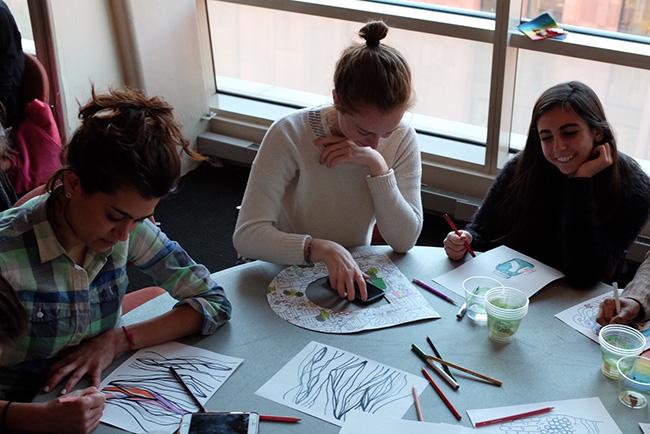TEDxNYU Gets Legit About Coloring
TEDxNYU hosted a Color Party to relieve some stress with art therapy.
April 18, 2016
This week, TEDxNYU held an event in Kimmel called Color Party that started by noting a very interesting recent trend. Coloring books, once thought to be solely for children, have become more and more popular among adults. While some may laugh this off as a silly fad, a number of speakers got to the heart of coloring’s appeal.
Speaking first was Richard Chang, one of the developers of an app called Pigment, which allows users to color on iPads. He hopes that the app will help users relax, with the coloring serving a meditative purpose.
“I work a lot and I often find myself feeling very stressed,” Chang said. “I used to watch half-hour TV shows to take my mind off of work, but this never quite worked. When I started coloring, I found myself feeling rejuvenated much more. It works because it is active and because it gives you a firm sense of control.”
The app yielded impressive results, including a detailed drawing of a fruit arrangement.
A number of art therapists also spoke about the benefits of creative pursuits. First was Jordan Potash of the American Art Therapy association. Potash graduated from Syracuse with a double major in psychology and studio art and was deeply interested in the overlap between the two. He noted that art can not only serve as a calming form of escapism, but also help make someone aware of very deep seated traumas and self-perceptions. He told the story of a patient who drew himself as an angry, black and red ball with a calm, white center. The patient “realized that if this is how he saw himself, it was likely the way other people saw him. He had reached a new self awareness through his art.”
Marygrace Berberian, an NYU Steinhardt professor of art therapy, spoke about the history and development of art therapy as a field. It began in the late 19th century, but rose to prominence in the 1970s and ‘80s. She noted that there are now over 6,000 licensed art therapists in the U.S. in 34 states, with over 1,000 practicing in New York.
“Art therapy is more than just drawing,” Berberian said. “It includes reflection and analysis on the work created, which can lead to important realizations for the patient.”
As the speeches went on, the audience was given colored pencils and pages of coloring books to experience first hand the benefits of coloring. People got very caught up in their drawing, bringing home the points made by the speakers that coloring is not just for kids anymore.
A version of this article appeared in the Monday April 18 print edition. Email Tony Schwab at [email protected].























































































































































